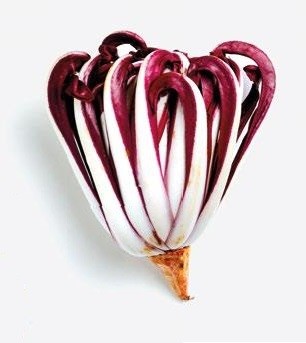These are examples of seasonal produce that is available only during certain months of the year – usually in late spring – and can be found at some suppliers, restaurants and stores in Singapore. Other countries and businesses may have produce with seasons different from the ones shown here.


White bell pepper
From: Italy; April-July While red, yellow and green bell peppers taste slightly bitter, their white cousin is a rare variant that is sweeter and has a firmer, crunchy texture. It lacks capsaicin, the compound that gives chili its heat. Chef Angelo Ciccone of Basilico recommends enjoying it chargrilled with rosemary and sea salt over toasted ciabatta and molten cheese.

Carciofi mammole
From: Italy; April-July Chef Ciccone notes that the sophisticated artichoke is often tedious to prepare, but offers fantastic nutty, earthy and clean green flavours once mastered. The mammole or “big-breasted” is the biggest variety (which is why it is also called the “mother artichoke”). He recommends a Roman-style recipe where the artichoke is washed in lemon water and pan-fried with garlic and white wine.

Pepquino cucumber
From: Holland; November-April Originating from an ancient wild South American plant, these rare grape-shaped cucamelons may resemble tiny watermelons, but have the fresh, crisp taste of cucumber with a tinge of lime. Eat raw or stir-fry into a salsa, or even pop one into a martini. Look for them at Culina.

Friarielli
From: Italy; April-July Friarielli (or rapini) is part of the broccoli family, but much tastier and has super antioxidants, says Chef Ciccone. The only edible parts are the young leaves, buds and stems (discard the hard stem and roots). They are best boiled for a minute to tone down their slight bitterness, then sauteed with extra-virgin olive oil, garlic, salted anchovies and chilli.

Topinambour
From: Italy; April-July The root vegetable better known as the Jerusalem artichoke is not an artichoke at all, but a tuber from the sunflower family. It’s highly prized for its nutty, sweet and potato-like flavours as well as its crisp, addictive texture. You can use this low-carb alternative in similar ways to a potato, though it can also be added raw to salads and stir-fries.

Wild asparagus
From: Parts of Europe, including France; April-July Foraged from the wild, this has more overt woodsy and balsam aromas, and an earthy flavour. It can be eaten in many ways, either raw or briefly cooked. Stocked at Culina.

Radicchio tardivo Treviso
From: Italy; April-July The finest of all vegetables from the chicory family, the late-blooming Treviso raddichio tardivo is pleasantly bitter and crunchy, finding perfect partners in fresh and seasoned cheeses. Its colour is the result of a labour-intensive technique where the mature plants are harvested with a large head and full dark leaves, and cleaned. Still with their roots attached, they are tied in bunches and immersed in large tanks filled with water from the Sile river in northern Italy. As the radicchio matures, its roots become white and absorb nutrients from the water while its reddish tufts re-sprout and give the vegetable its inimitable taste.

1. Agretti
From: Italy; March-May A coastal plant and a succulent. Also known as monk’s beard or saltwort, it is similar to spinach in flavour, and its fleshy, needle-shaped leaves have a fresh, briny punch. Chef Buck from Le Bon Funk uses it lightly blanched, dressed with olive oil and lemon juice, and served with grilled fish.
2. Cedar + pine needles
From: Canada; harvested March-April, but available year-round The tips of evergreen trees such as cedar, fir and pine are more like spices than vegetables but are full of flavour. Chef Buck uses them to season broths and make a jelly for his foie gras dish, as they exude the woodsy, aromatic scent of the forest floor.
3. Pineapple tomato
From: France; May-September The bicoloured beefsteak tomato is called “pineapple” for its ribbed exterior with red and yellow swirls of colour. It’s mildly sweet with low acidity and a hint of citrus, and can often weigh up to 1kg. At Le Bon Funk, you’ll find it served with ham steak, dressed with fresh garlic, kosher salt, basil oil, French sorrel and lemon juice.
4. Okinawa spinach
From: Japan; March-September, but becoming available year-round A bit more fibrous than other types of spinach, with a slight pine flavour. Perfect in the Le Bon Funk crudites dish alongside a dip of cured pollack roe.
5. Suzu pumpkin
From: Japan; March-November, but becoming available year-round Chef Buck uses the whole suzu pumpkin raw – the seeds, skin and flesh can be eaten when the pumpkins are at their peak. They are known for their exceptionally sweet flavour – like a squash and sweet potato combined.
6. Red endive
From: Belgium; all year round While it looks similar to the common yellow Belgium endive, this festive red and white variety is not nearly as bitter. Its crisp, juicy snap makes it a standout in a salad with Kyoho grapes and Tete de Moine cheese at Le Bon Funk.























